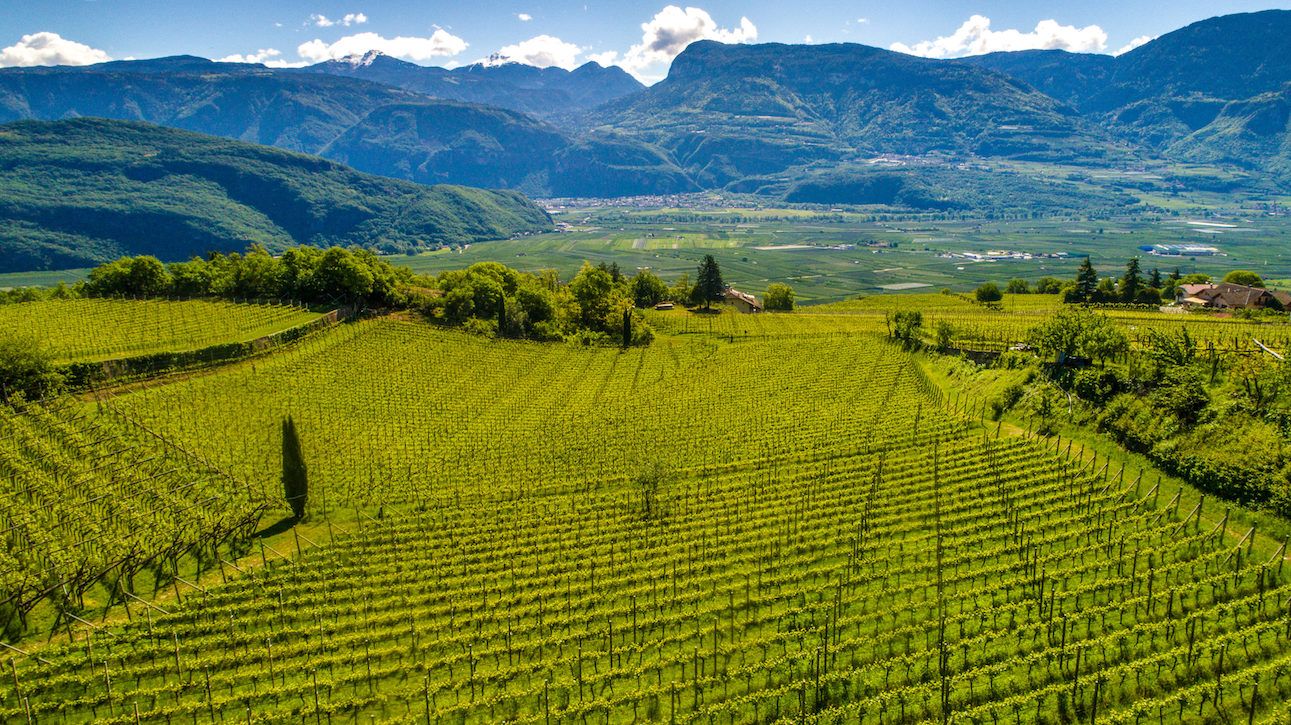Cantina Tramin, the winery that produces Epokale, is one of a number of important cooperatives in Alto Adige, that collectively produce 70% of the region’s wine.
Mid May. I’ve just driven from Venice where it was sunny with the temperature pushing 22 degrees Celsius.
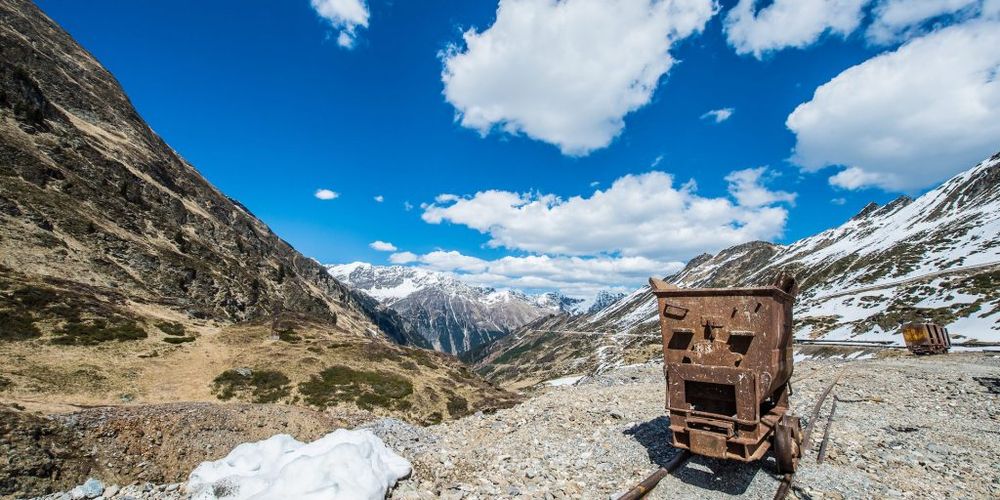
By contrast, where I’m sitting now, improbably just outside a disused silver mine near the village of Vitipeno, there is snow all around. It is two degrees and starting to snow again. I am in this beautiful yet desolate location for the first ever tasting of Cantina Tramin‘s new wine, the Epokale 2009.

Cantina Tramin’s head winemaker Willi Sturz
“We really are excited to try this wine, I can tell you,” enthused Cantina Tramin’s Willi Sturz, chief winemaker at this leading Alto Adige cooperative for the past 26 years. Epokale, a medium-sweet Gewürtztraminer, remained on the lees for eight months before travelling in August 2010 to the Monteneve silver mine 2000 feet above sea-level, where it has been stored ever since. This is a new venture for this Gewürtztraminer-focused winery – some 22% of its production. Although very small volume – just 1200 bottles at €50 a pop – its very creation reflects this highly regarded cooperative’s ambition.

Inside the silver mine
“It was important the wine be kept at a constant temperature – 11 degrees – with good humidity (90%) and we realised the conditions inside the mine are pretty much perfect,” he says.
We were actually lucky to taste it at all; unseasonably heavy snowfall had earlier that day closed the entrance to the mine but a few bottles were extracted just before it became impassable.
Although this is the first ever vintage, Epokale, as its name suggests, recalls the past. Sturz admits the medium sweet wine (some 10% of the grapes used were botrytis infected grapes) harks back 200 years to a time when wines had a naturally higher sugar content. Epokale is not comparable to modern dessert wines, and will taste at its best in over 20 years time. Right now, it is quite unlike anything I have tried with complex spicy aromas including cinnamon and nutmeg but with an underlying dryness which gives Epokale a surprisingly pronounced backbone.
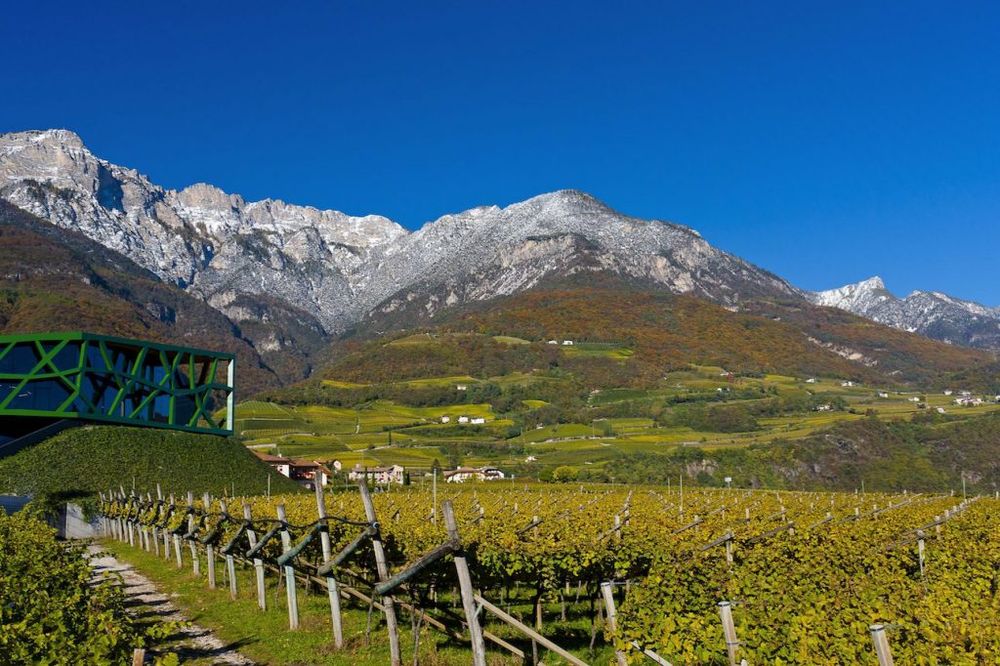
Cantina Tramin
Most of the grapes for Epokale come from the Nussbaumer vineyard, from where Cantina Tramin’s most famous and iconic wine – the award-winning Nussbaumer Gewürtztraminer – also heralds. A vertical tasting of vintages from 2015, 2012, 11, 09, 05,03 made me realise why this wine has – improbably perhaps, given how generally unfashionable this grape variety is – been described as one of Italy’s truly great wines.
The most recent vintages showed great, wonderful freshness but some of the older vintages – particularly the 2003 – show fantastic depth and maturity. Little wonder that the wine has won the coveted Gambero Rosso tre biccieri (Three Glasses) award no fewer than 23 times, with Willi Sturz winning winemaker of the year in 2004.
Yet as I became familiar with Cantina Tramin’s range over a three day visit to Alto Adige– including a tour of the iconic new green winery, built just seven years ago on the outskirts of Tramin (Termeno), the small town which gave its name to Gewürtztraminer (for many, the variety is known simply as Traminer) – I came to realise this was no ordinary cooperative.
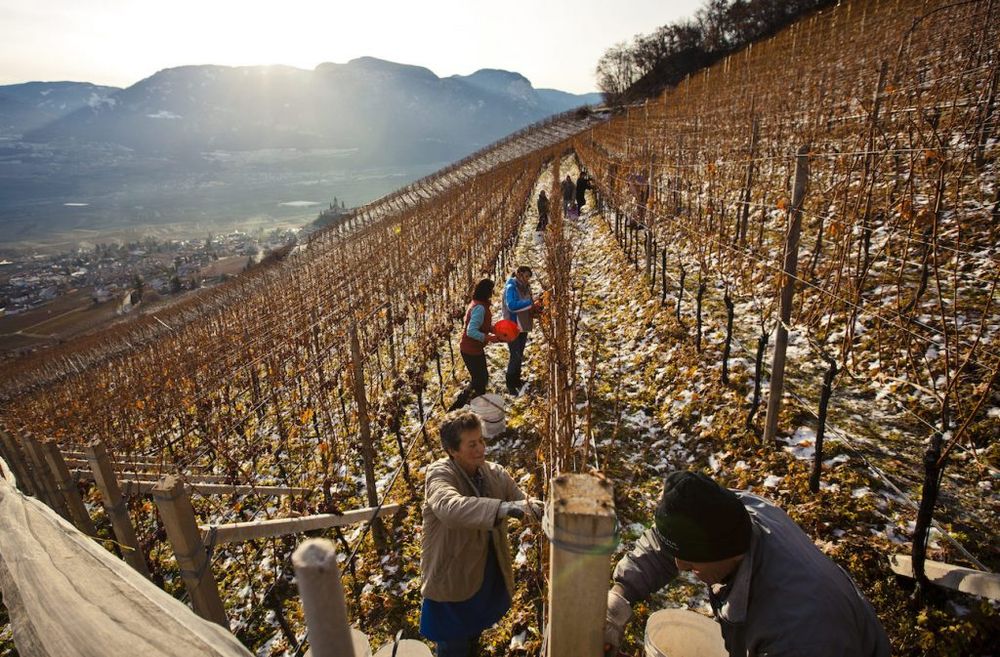
Cooperatives are still a big deal in Alto Adige, which produces less than 1% of Italy’s wine but is well regarded as a high quality region. Latest estimates suggest coops make 70% of the region’s wine, with market leaders like Cantina Caldaro (five million bottles), Cantina Bolzano (three million) and Cantina San Michele (2.5 m) all familiar names in local supermarkets and beyond.
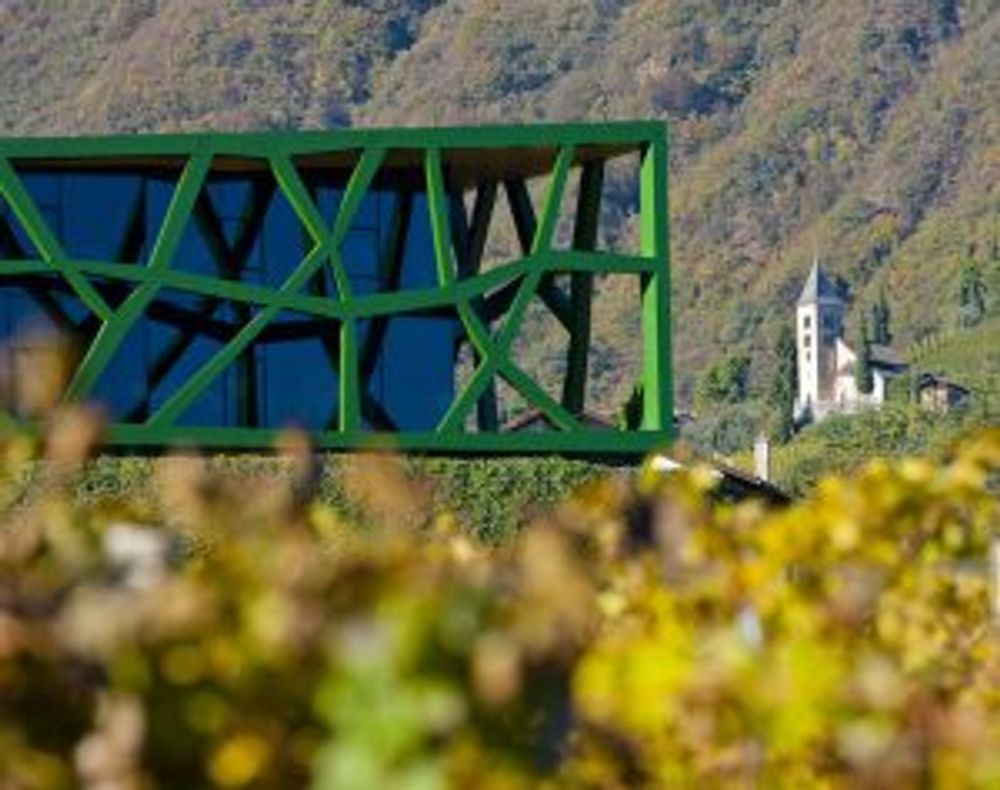
Cantina Tramin sits on the edge of Tramin, the town that Gewürtztraminer is named after
Cantina Tramin, which was initially founded in 1898 but assumed its current form in 1971 when it merged with another local cooperative, is different in that it is more geared towards exports than its rivals and in the UK at least, is focused on the off-trade. (Hallgarten, Druitt & Novum Wines takes most of their top wines). Cantina Tramin has worked with the same 200 families that supply grapes – and take a share of the profits – but Sturz says it is the terroir of its leading vineyards that truly makes it unique.
“The steep mountain that rises in front of Tramin and the micro-zones we have access to, make our wines aromatic and wonderfully fresh; it also means we can offer a fantastic range of truly high quality wine,” he says. The genesis of this can be dated back to the 1989 launch of the Terminium range – using the best grapes grown in specific locales; this marked the Cantina’s shift towards producing genuine high quality wines alongside its already pretty sound regular range.
The wines found here are as atypically Italian as you can get
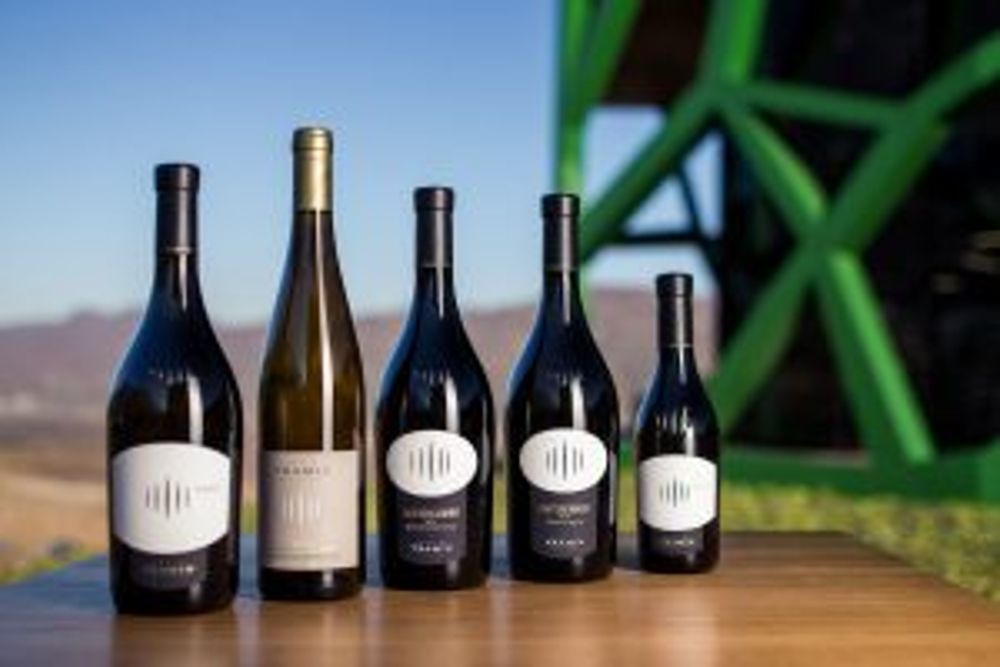
Part of Cantina Tramin’s range: (l-r) Stoan, Gewürztraminer, Nussbaumer, Unterebner, Roen
Aside from Cantina Tramin’s excellent Nussbaumer Gewürtztraminer (part of its Selections range) it produces a regular Gewürtztraminer (in its slightly cheaper Classic range) that is also well worth trying; like other Alto Adige interpretations of this grape, the wines are generally drier and more textured than, say, Alsace Gewürtztraminer which has made them a hard sell in some markets.
Other wines of note include the delicious Stoan, a high end blend of 65% Chardonnay, 25% Sauvignon Blanc and 10% Pinot Bianco and Gewürtztraminer, a wonderfully rich wine with good mouth feel; Moriz, a Pinot Bianco with great suppleness and richness; Loam, a surprisingly full-bodied, fruit driven blend of Cabernet Franc, Cabernet Sauvignon and Merlot; Pepi, a slightly saline, fruit-driven Sauvignon Blanc, and some delicious Pinot Noir, including the Maglen Pinot Noir Riserva 2014.
If you reckon that looks like an uncharacteristic list of wines for an Italian winery, you’d be right. As I discovered Cantina Tramin – like most other wineries in Alto Adige – is as atypically Italian as it is possible to get.
My sense of displacement at the silver mine continued throughout my stay in Trentino Alto Adige/Sud Tirol, when I had to keep reminding myself that I was in Italy at all. This is a region where most of the signposts are in German first (and Italian second, if at all) and where most restaurants/hotels and indeed individuals that you meet have names that reflect the region’s Germanic heritage (for centuries prior to 1919, this whole area was part of Austria as part of the Austro-Hungarian empire; even today, 70% of locals speak German as their first language).
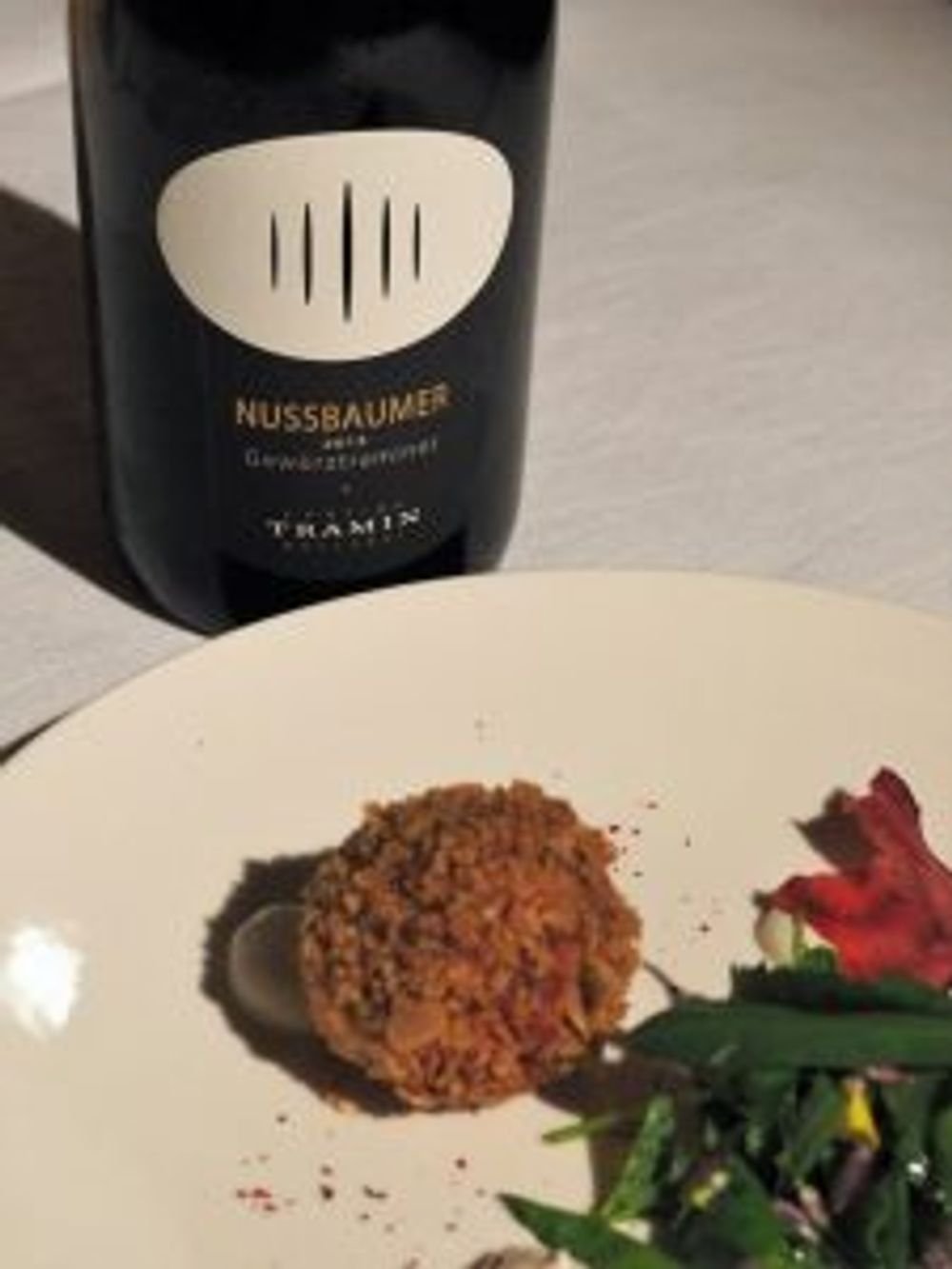
The food – hearty, generally very high quality with lots of distinct local flourishes – and local customs reinforce the sense that you are travelling in a German and not an Italian region, as of course do the wine varieties.
“Our most important varieties are Gewürtztraminer and for export markets like the US in particular, Pinot Grigio though the variety that most expresses our terroir is, I think, Pinot Bianco. For reds, aside from Pinot Nero, we have Lagrein and Sciava, which although very different from each other are highly expressive and make unique characterful wines,” says Werner Waldboth of the Konsortium Südtiroler Wein/ Consorzio Vini Alto Adige.
For those looking for something different in their wine, this couldn’t be better news.
“This is a multi-faceted region in terms of terroir with cool mountain breezes, lots of sunshine and big diurnal shifts in temperature all bringing wonderful freshness to the wines. British consumers looking for freshness and liveliness will find that Alto Adige ticks most of the boxes,” says Nancy Gilchrist MW.
Most of Cantina Tramin’s wines are available in the UK via HDN Wines.
